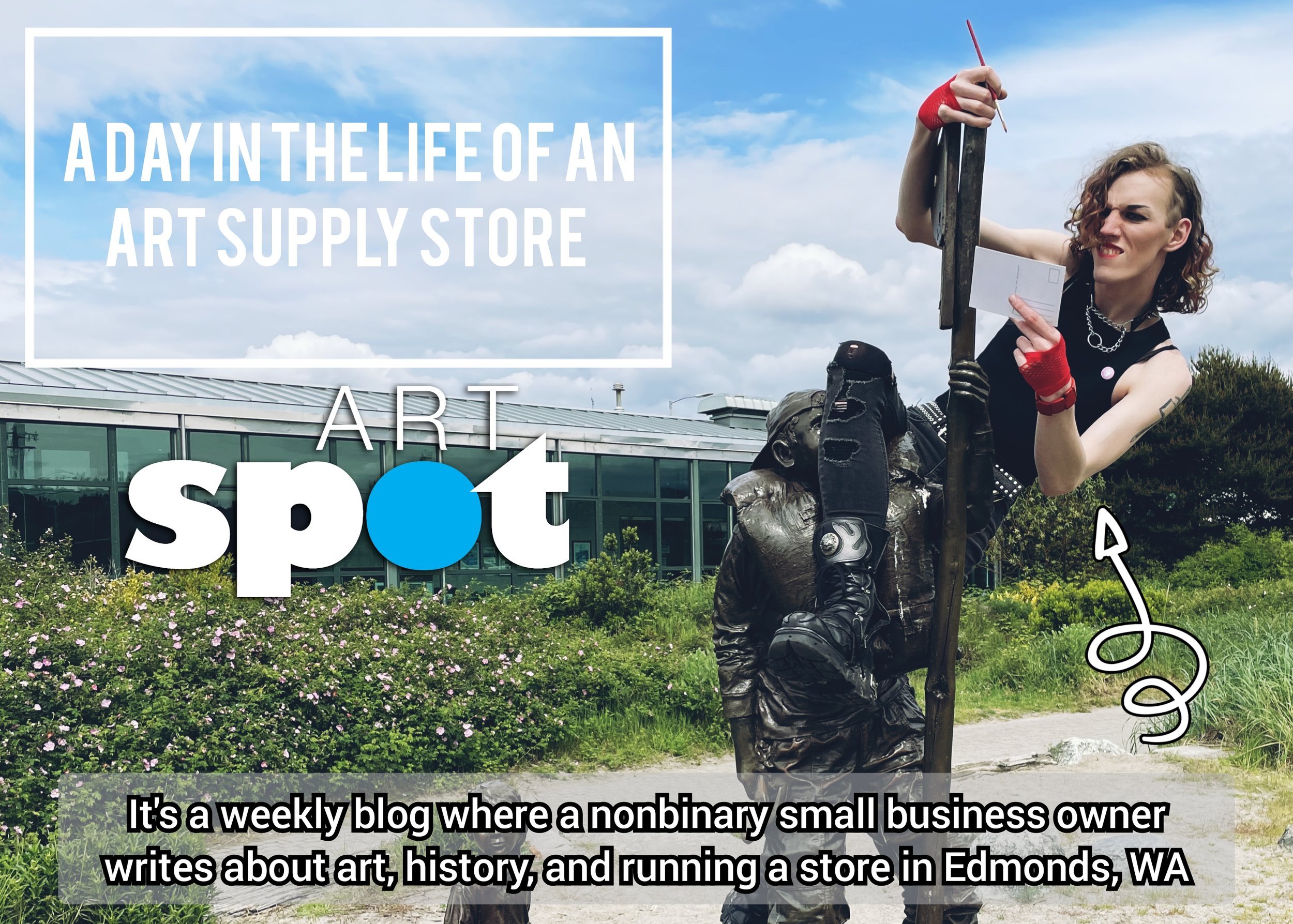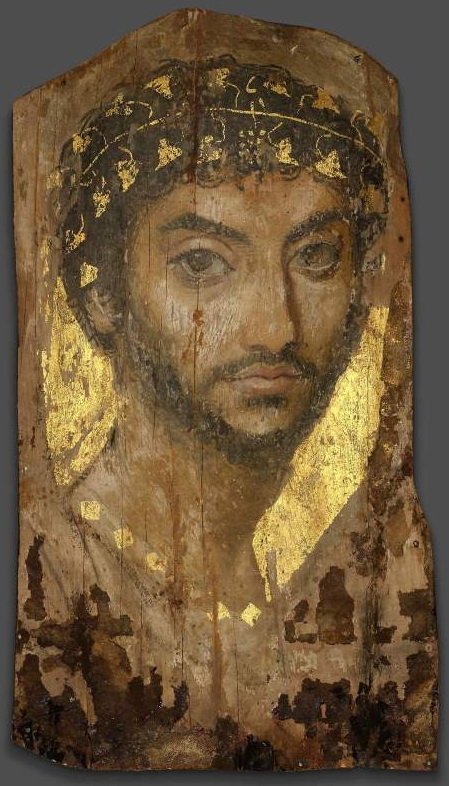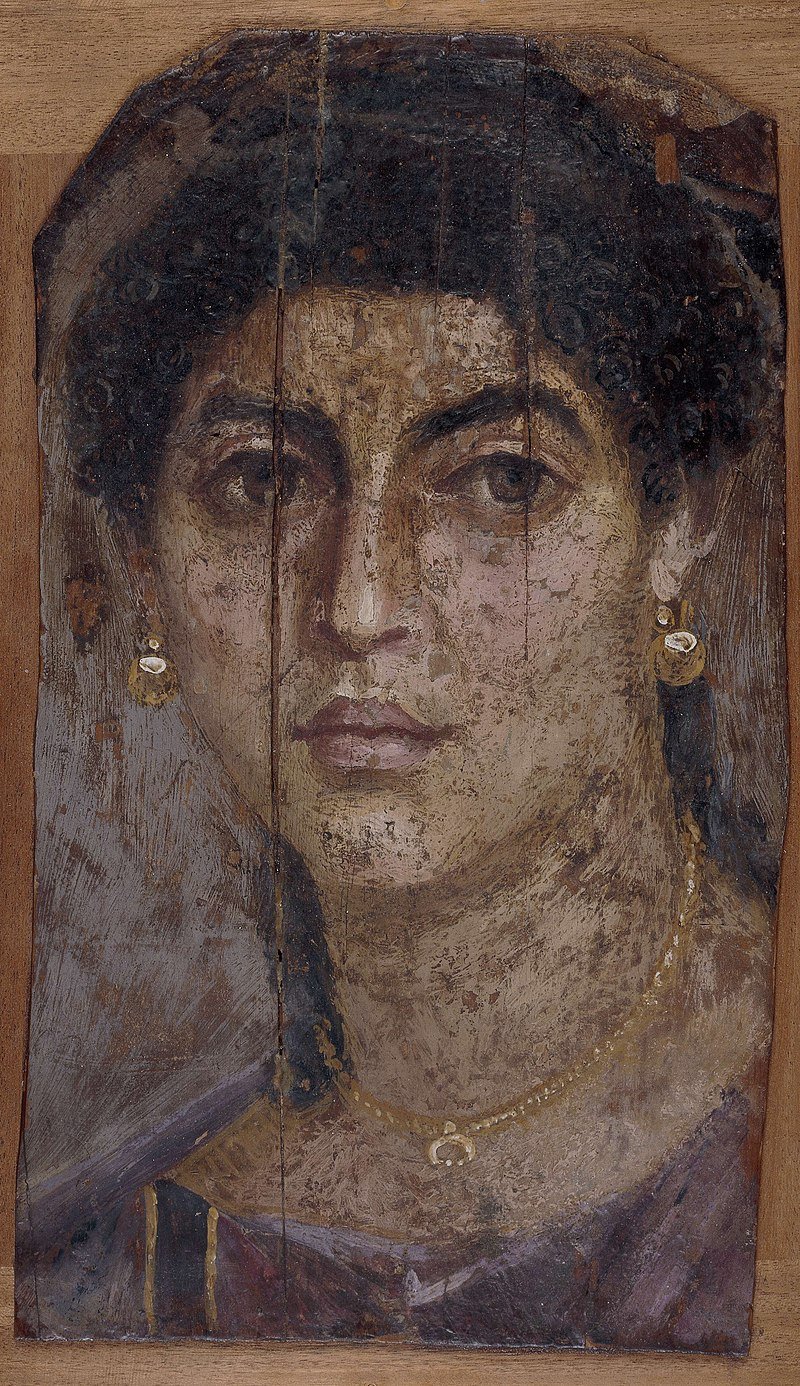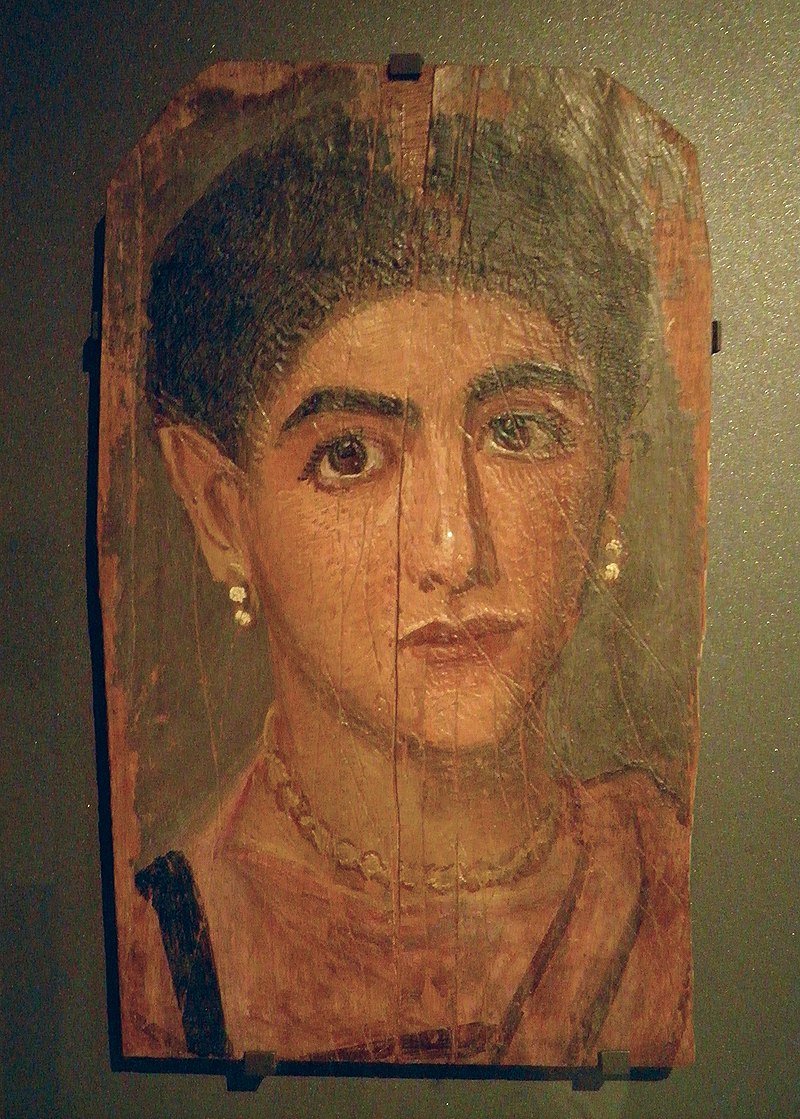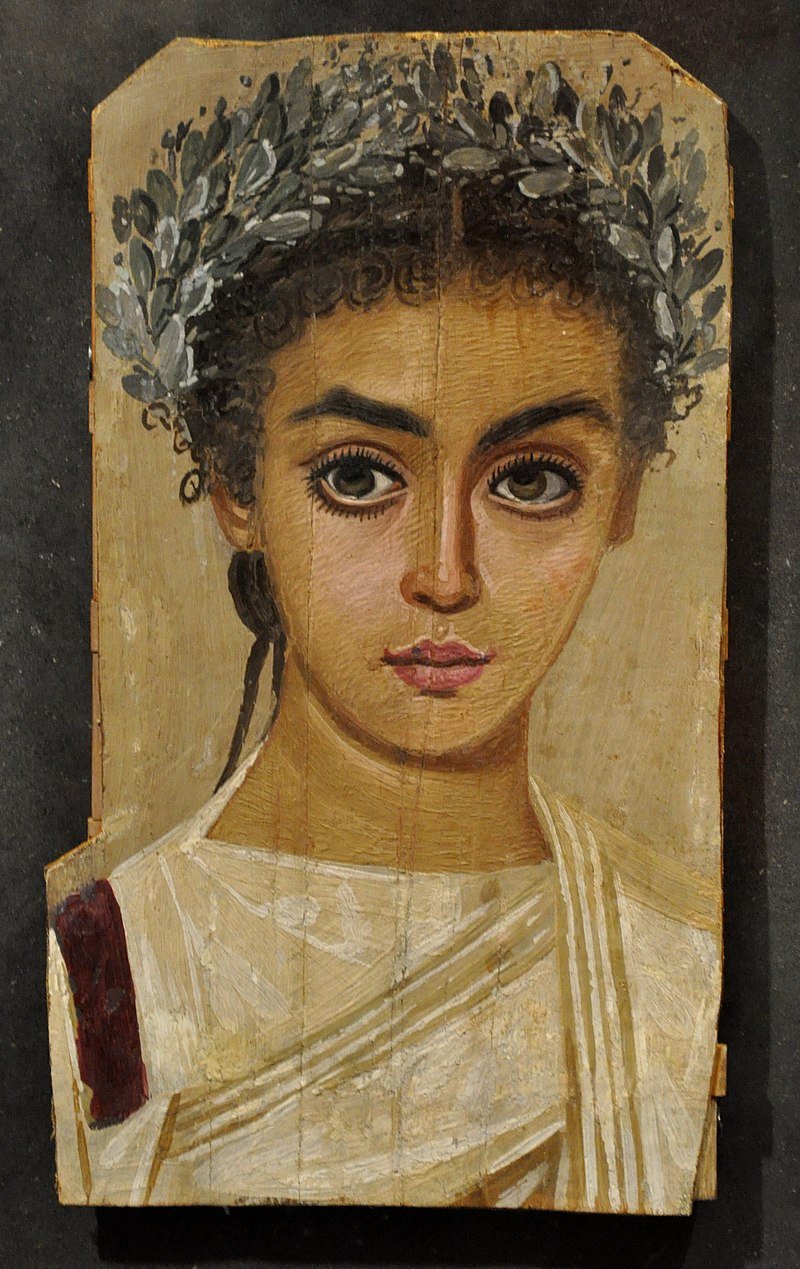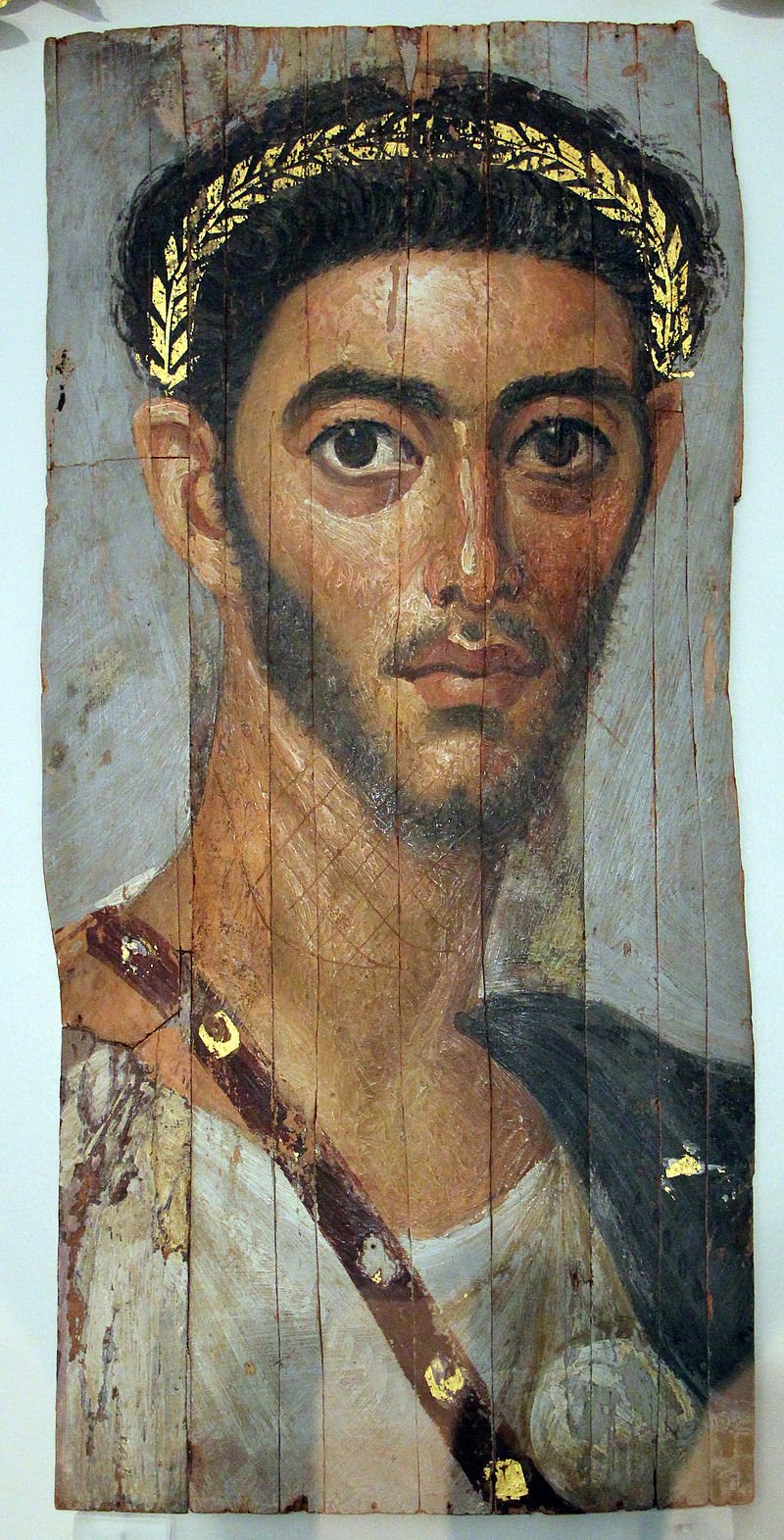2000 Years in the making
Anything older than the span of several lifespans can be increasingly difficult to comprehend. Old things just seem old, and the people who made them could be aliens for all we know. Historical works of art, however, offer us a valuable insight into what life was like at the time of creation. The older the better(1)!
This brings us to one of the downsides of time passing: objects and materials age, decay, and disappear just as we do. As such, it’s safe to assume that any artifacts we rediscover are merely a fraction of the sum of everything that has been created. The chances that a piece of art from as far back as the early Roman empire would be practically untouched by age are virtually zero. However, this is where encaustic painting helps.
Encaustic painting uses hot beeswax as a medium for pigment. It has great utility in layering and texture, but the most remarkable aspect(2) of the medium is its ability to preserve. Beeswax is weird(3), and under the right conditions it can age for hundreds or thousands of years before showing meaningful signs of decay. Seeing someone paint with it is almost as much performance art as anything else. Like a blacksmith, the artist is working with heat and special tools. They create effects unachievable by other materials, and whether they know it or not, their work could be enjoyed for generations to come!
My background with encaustics is mostly in having seen my mom work with them. She began experimenting with them in the early 2010’s(4), and it really seemed to hit the spot with the mixed media work she’d been branching out into. For me, everything clicked in 2016 when we got to go spend a day at the Louvre(5). We rushed to a smaller gallery on one of the lower levels where several encaustic portraits were waiting for us.
Combining several aspects of the Louvre’s collection(6) were several truly ancient pieces of art: a small collection of Fayun mummy portraits dating from the 1st to 3rd century CE. Unlike the mummies from the ancient kingdoms of Egypt, these were a product of syncretization(7) between local traditions and those from Greece and then Rome. The ornate, golden sarcophagi of the pharaohs had been supplanted with more modest burial conditions fit for a wider range of people, and elaborate funeral masks(8) were made as portraits on wood panel using encaustic(9). Being far more familiar with the far more recent artistic traditions of the middle ages I was shocked both by the degree of realism achieved by the ancient artists and the lack of decomposition after nearly two millennia. These people looked like regular people(10), and the paintings were exceptionally(11) preserved. It was like looking in a 2000 year old mirror.
I like to tell people when they’re browsing the encaustic department at ARTspot that they have the opportunity to create something that could last for centuries(12). For most people, however, encaustics offer an experience and end product that’s difficult to replicate with different materials. The start-up cost can be a bit steep(13), so it’s nice to find someone willing to lend some of their materials and expertise to find your footing(14).
Luckily, that chance is rapidly approaching! Whitney Buckingham-Beechie will be at ARTspot this Thursday the 21st(15) to demo some encaustic techniques. I’m sure she’d love to talk with you about her upcoming class offerings. Whether you’re interested in creating unique abstract works of art, adding an extra tool to your mixed media repertoire, or maybe adding to the archaeological record, maybe it’s worth checking out!
(1) My background in historical costume design greatly benefitted from the study of art history. It's not until relatively recently that people have been recording what people, especially the lower classes, wear in writing if that writing has even been preserved and is accessible. Art is one of the greatest gifts to someone in my position, since it de facto tends to record trends in style. Either how people actually looked or at the very least a record of the ideal of how a society thought people ought to look. However, as art is further and further removed from the present and historical context gets muddied. The opportunity to see exceptionally realistic depictions of people from so long ago actually thrills me.
(2) To me at least! People often ask me at the store about what kind of art I like to make, and I jokingly respond “selling art supplies,” but it’s pretty true. The effects people can create with the materials sold at ARTspot continue to amaze and delight me, but there’s SO much to the mechanical and historical aspects of the materials that has always engaged me. How does one binding medium compare to another and in what terms? Why does one pigment fade more quickly than another? There’s no shortage of ad-blasted articles or deep forum posts on artistic technique, I’ve always aimed for this blog to be a probably mostly true repository of information about my special interest: art supplies.
(3) Like everything else that bees produce, it’s, like, WAY too complex to make sense given that it’s made by the best little bugs. An approximate formula for beeswax is C15H31COOC30H61 . Despite looking like a pretty bonkers molecule, this combination of hydrogen and carbon with a sprinkle of oxygen thrown in is extremely stable! Because it’s an organic byproduct of bees doing their bee-jobs, each species makes a slightly different kind of wax. It makes sense, but that’s about as far down the rabbit hole of biochem that I’m going before I start saying things that are less and less likely to be scientifically correct.
(4) 2 BA (Before ArtSpot)
(5) My mom and I both share a love and appreciation for art history, and I’d just graduated with an incidental minor in archaeology due to my special interest. This was a good trip for us!
(6) Art and artifacts that may or may not be there at the behest of the people and cultures who created them.
(7) I love this word, and it just doesn’t see enough use. For those not in the know, this is the process by which most popular Christian holidays seem, and are, extremely pagan-coded.When different cultures meet, there’s a lot of different forces that encourage syncretization whether they be the passive blending of cultures or through the intentional pressures of an institution.
(8) A practice mainly attributed to Hellenistic culture. This goes back to old Mycenean (Bronze Age) Greece or earlier. I reckon that folks are most likely to know the “Gold Funeral Mask of Agamemnon,” which may or may not belong to the actual face of the maybe-real king, but it’s a good representation of someone after they’ve passed. Gold, like wax, is also a particularly durable material that ages well. It’s unfortunately also quite malleable, but it’s kinda uncanny how fresh 5000 year old jewelry made of pure gold can look. Pro tip: if you’re going to make a funeral mask for someone important, use gold or beeswax. Whichever is more convenient.
(9) And some with tempera, but that’s not what this blog post is about. Maybe later. Paints made from egg is also fun for me.
(10) Albeit super wealthy and posh. Egypt was the breadbasket of the mediterranean world even before its subjugation by Alexander in 332 BCE. When Rome came in to overthrow the Ptolemaic dynasty, there was big business to be done in keeping the masses of the Eternal City fed. Still though, these people weren’t build-a-massive-burial-complex-to-house-your-god-king levels of wealthy.
(11) I know not many people may have as good a reference for how most things look after 2000 years but it’s generally NOT pretty. Metal is oxidized and corroded, a victim of its own chemical amalgams. Most things organic, like wood, have been long gone for a long time unless highly specific conditions are met. Most paints and dyes have faded or at best become discolored, only traceable by trace elements and compounds. Stone does pretty good under good conditions, but even so it’ll usually be a sad, beige shadow of its brightly colored past. A big part of archaeology, to me, is imagining how much beauty has been lost never to be experienced again.
(12) Honestly I think this might intimidate people more than anything. If you’re suffering from similar symptoms, I recommend attending the No Talent Art Club every Friday at ARTspot from 6:00-8:00pm.
(13) In addition to the paints and mediums, a beginner must also find a way to reliably heat the material to a constant temperature. A pancake griddle usually works great but is henceforth not to be used for pancakes. It’s also not recommended to expose synthetic (plastic) brushes to high heat. Try it out, and then come back to buy some horse or goat hair brushes.
(14) Prepare for an unabashed plug here for our good friend Whitney. Despite running an art supply store, I really don’t like using these blog posts to try and sell stuff but rather inform y’all about how absolutely weird and dramatic all the stories behind these materials are. However, we love Whitney, and she’s very much taken up the torch of bringing hot wax training and instruction to the unsuspecting people of Edmonds.She’s a party, and you’d do well to stop by to meet her.
(15) Also my birthday (toot toot!)

